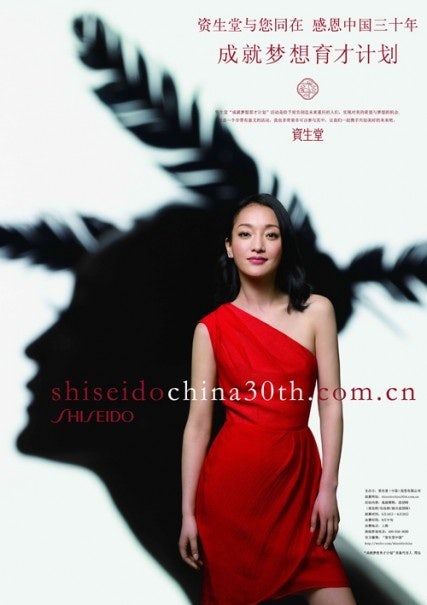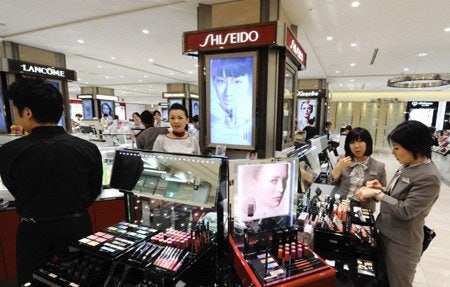Project Runs Through June 30#

Zhouxun, Chinese actress, for Shiseido's Future Beauty Project
With brands like Louis Vuitton and BMW celebrating milestone anniversaries in China this year, the Japanese cosmetics maker Shiseido, which is commemorating its 30th year in the Chinese mainland, has joined the club with its recently launched Future Beauty Project. Running now through June 30, Shiseido is billing the Future Beauty Project as an initiative to support the aspirations of those who hope to become "future top models" or "future top hair and makeup artists." For the project, Shiseido created an exclusive website where interested parties can download and send in an application.
Models and hair and makeup artists chosen as finalists to take part in the project will be announced at an event in Shanghai on September 14, with select models to be featured in Shiseido advertisements in the China market. Select artists will be chosen to receive training at the Shiseido Academy of Beauty and Fashion (SABFA) in Japan.
Since its debut in mainland China in 1981, Shiseido's footprint has expanded rapidly throughout the country. As an early mover among imported cosmetic brands, the company has seen Chinese consumers progress from absolute beginners in the cosmetics market to some of the most demanding in Asia. While not every major international cosmetic brand was convinced of the attractiveness of the China market in the early 1980s, a trip to Beijing 30 years ago by Shiseido's chairman was all it took to convince him that the country had great potential.
One of the factors that has contributed to Shiseido's success in China has been its emphasis on localization, experimentation and "affordable luxury". In 1994, Shiseido launched its first localized sub-brand, the more affordable AUPRES, designed exclusively for the Chinese market, and last year the company debuted its newest China sub-brand "DQ," which is targeted at drugstores. Shiseido has also been quick to sponsor events like the Shanghai Expo and cultural exhibitions at venues like the Shanghai Art Museum. In order to support local demand and its continued China expansion, Shiseido has established two factories in Shanghai and Beijing, as well as an R&D center in Beijing.

Shiseido sales counter in China
What all of this action boils down to is the fact that, unlike 30 years ago, the Chinese cosmetics market is now far more saturated, with Shiseido now facing competition from well-known global brands like Lancome and Estée Lauder as well as local upstarts like Shanghai Vive. Shiseido simply has to work harder to appeal to a more brand-savvy and confident consumer who is now spoiled for choice. Shiseido may have been one of the first major cosmetics makers to localize for China, but it's definitely not the only one anymore. The intense localization efforts we've seen recently from Estée Lauder in particular should be of concern to Shiseido, with its rival appointing Chinese supermodel Liu Wen as its newest spokesmodel and the "face" of the Pure Color Metamorphosis China-only cosmetics line and opening a new R&D center in Shanghai. It may be all about beauty, but competition in the cosmetics industry certainly isn't pretty.